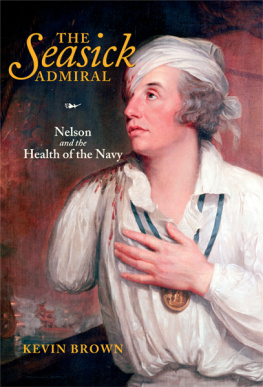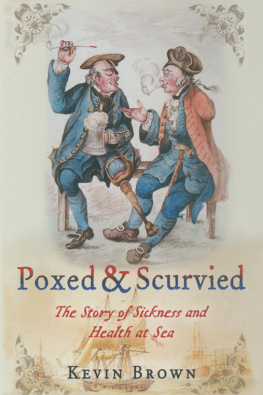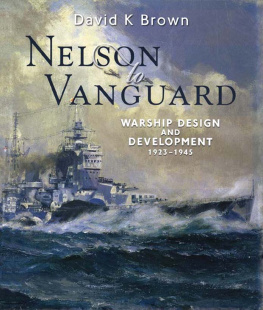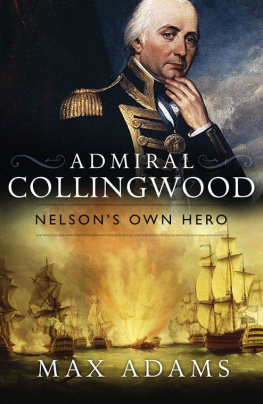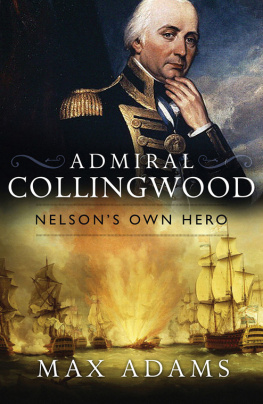Copyright Kevin Brown 2015
First published in Great Britain in 2015 by
Seaforth Publishing
Pen & Sword Books Ltd
47 Church Street
Barnsley S70 2AS
British Library Cataloguing in Publication Data
A catalogue record for this book is available from the British Library
ISBN: 978 1 84832 217 2
PDF ISBN: 978 1 84832 419 0
EPUB ISBN: 978 1 84832 418 3
PRC ISBN: 978 1 84832 417 6
All rights reserved. No part of this publication may be reproduced or transmitted in any form or by any means, electronic or mechanical, including photocopying, recording, or any information storage and retrieval system, without prior permission in writing of both the copyright owner and the above publisher.
The right of Kevin Brown to be identified as the author of this work has been asserted by him in accordance with the Copyright, Designs and Patents Act 1988.
Typeset and designed by M.A.T.S., Leigh-on-Sea, Essex
Printed and bound in Great Britain by CPI Group (UK) Ltd, Croydon, CR0 4YY
To my own Band of Brothers, those friends who have encouraged me in my research, writing and travels.
And Sir, the secret of his victories?
By his un Servicelike, familiar ways, Sir,
He made the whole Fleet love him, damn his eyes!
Robert Graves, 1805
Preface
One of the most evocative and iconic places in British naval history is the orlop deck of Victory, scene of the death of Nelson in the hour of his great victory at Trafalgar. In the days when visitors were conducted around Victory on tours guided by naval ratings, these fresh-faced young sailors always dwelt with relish on the death of Nelson, the casualties from Trafalgar and the stench and gore of amputations and crude battle surgery in the cockpit painted red to hide the blood. Their accounts were always vivid, sometimes imaginative and sensationalist, perhaps not always accurate, but all the more meaningful for being delivered by Nelsons heirs. The health, medicine and welfare of Nelsons navy always played an important part in their accounts, but what they were perhaps not fully aware of was that their own ruddy good health was a legacy of the importance given to the health of the navy and a reflection down the years of Nelsons own concern for the welfare of his men. Nelsons own medical history indeed reflected wider naval medical practices of the time and his own ill-health translated into a practical concern for the health of his fleet which in turn gave it advantages over some of his enemies.
Nelson himself said that I have all the diseases that are, but there is not enough in my frame for them to fasten on. The story of his health is the story of the illnesses and wounds which beset his contemporaries at sea. Apart from the loss of his right arm and sight in his right eye, Nelson is perhaps most often remembered for suffering from seasickness which did not stop him from pursuing a successful career at sea.
In many ways he was unlucky and as a sickly child ought never to have gone to sea, but the way he overcame these problems to become perhaps the greatest of Britains maritime heroes tells us something of the nature of the man. However what Nelsons medical history reveals of the wider picture of health and welfare is perhaps even more significant, especially when his own contributions to the health of seaman is taken into consideration.
What I have not done is try to diagnose Nelsons illnesses or medical problems, but have looked at his medical history as it was presented and understood at the time. I am always suspicious of retrospective diagnosis of historical figures as the records upon which these are based are inevitably selective and coloured by the perceptions and prejudices of their age. Those records can never present a full and true picture and can only be understood in context. Any diagnosis after a couple of centuries and based on incomplete information can only ever be tentative; that is not the role of any historian of medicine.
The historical imagination is always helped by visiting the places where things actually happened or seeing an object with a direct link to the past. For Nelson there are so many places and objects, not just the Victory or the relics at the National Maritime Museum. Lecturing on the health of Nelsons navy to passengers on a cruise ship, Independence of the Sea, as it sailed through the Trafalgar waters will always be memorable, though its timing was nothing but coincidental, as well as seeing on the same voyage the canon at Tenerife which reputedly fired the shot that resulted in Nelsons amputation in July 1797. I am grateful to Timothy Hall for a tour of Haslar Hospital shortly after it closed. In Gibraltar, Dave Eveson of the Gibraltar History Society showed me around the naval hospital sites and the remains on the Rock that would have been familiar to Nelsons contemporaries. In Menorca, I was honoured to be invited to give a lecture in 2012 by the Amics de lIlla del Hospital in aid of the restoration of Britains first naval hospital on Isla del Rey at Mahon and had the opportunity to explore Menorcas naval and medical history, with thanks to General Luis Alexandre Sintre and, most especially, to Lorraine Ure.
As always much of the research for a book like this involves hard slog in archives and libraries. Foremost for the study of British naval history are the resources of the National Maritime Museum at Greenwich, the National Archives at Kew and the Royal Naval Museum at Portsmouth. Perhaps less known are the collection of Nelsons letters concerning naval medicine held at the Wellcome Library though these are a wonderful resource. I wish to thank the staff at all the institutions I have visited for their role in caring for this great heritage and their helpfulness. After all that archive and library work, it is refreshing to be finishing work on this book in a relaxed environment at sea as a guest lecturer on the history of medicine on the Pacific Princess, and once again talking about the health of Nelsons navy through waters he knew.
The topic of health and medicine at sea is a popular one and audiences to my many talks on the subject, especially my Trafalgar Day lectures, have raised many thought-provoking points on naval medicine as indeed have correspondents who have read some of my previous books. I must particularly thank Mick Crumplin for sharing with me his knowledge of military and naval surgery during the French Wars of the Revolutionary and Napoleonic period. John Williamson has shared with me his interest in the history of smallpox and drawn my attention to some sources for the early adoption of variolation and vaccination by the Royal Navy. In addition I wish to thank Lorna Swift, Honorary Librarian of the Garrison Library in Gibraltar, Tudor Allen, Nicholas Webb, Neil Handley of the British Optical Association for allowing reproduction of the portrait of Peter Rainier in his collections, Jane Wickenden, Historic Collections Manager at the Institute of Naval Medicine, and Robert Gardiner and his colleagues at Seaforth Publishing.
Kevin Brown
At sea off Aboukir Bay, Easter Saturday 2015.
Going to Sea
Britains greatest naval hero never should have gone to sea. Horatio Nelson whose death at the age of forty-seven in the hour of his greatest victory at Trafalgar sealed his lasting, almost legendary, reputation was a frail child ill-equipped for the ardours of life on the ocean. Although an anonymous poet later considered that the birth of that noble Nelson most clearly showed he would the world adorn, the warrior of Heaven, hurld headlong from the sky, A sickly child, prey to the marsh fevers of his Norfolk home, he was not exactly cut out for the hardships of naval life to which he was despatched at the age of twelve in March 1771.

